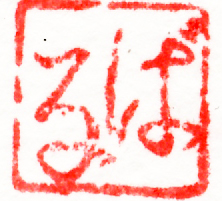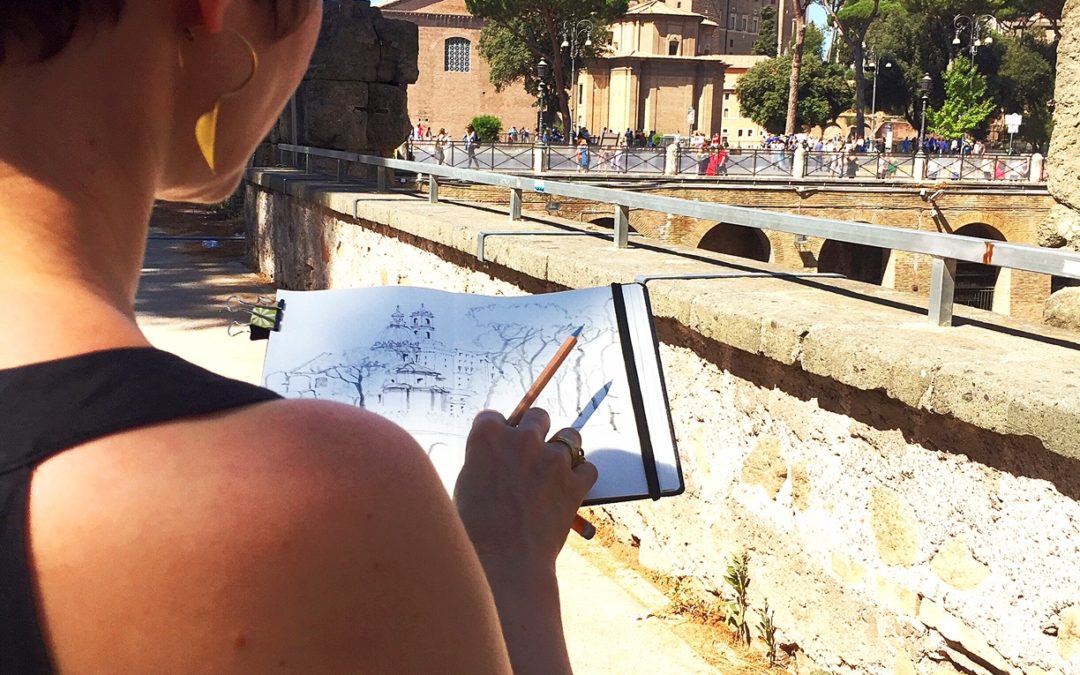I’m wondering now why I didn’t read this great book about “Drawing on the Right Side of the Brain” written by Betty Edwards earlier? It’s sooooooooooo much of an eye opener.
I’ve heard about this book several times, and finally bought it, bumping in it by accident in my favorite art supply store in Brussels. I thought “okay well let’s see finally what it’s about?”, as I’m preparing some drawing classes. And while reading it now I’m thinking “AHAAAAAAAAAAAA!” every two pages.
I have to share some of these “ahaaa!“-moments with you to inspire you and to learn you some basic drawing tricks that activate the Right side of your brain that utilizes it’s more intuitive and artistic aspects of thinking. Betty Edwards worked with neuropsychologist, neurobiologist, and Nobel laureate Dr Sperry (1913-1994) in 1978 on the scientific “split-brain” studies, to finish the first manuscript of the first edition of her book. For more than thirty years, Drawing on the Right side of the brain has been a work in progress.
The book is not only about learning to draw. The true subject is perception, about how to bring right hemisphere functions into focus and to teach how to see in new ways. These ways also help to discover how to transfer perceptual skills to thinking and problem solving. So even if you’re not a beginner in drawing, this book is most interesting to read. It will certainly help you to improve the understanding of how your brain works, and thus even improve your drawing.
“Learning to draw is really a matter of learning to see – to see correctly- and that means a good deal more than merely looking with the eye” [Kimon Nicolaides, the Natural Way to Draw]
Betty Edwards defines 5 fundamental seeing skills that cause a cognitive shift to the right hemisphere by “tricking” the dominant left hemisphere into dropping out of the task, for learning how to easily draw realistic images of observed subjects. With these five skills you can draw any subject. As with the ABCs of reading you can read any text.
The basic skills are:
- the perception of edges (seeing where one thing ends and another starts)
- the perception of spaces (seeing what lies beside and beyond)
- the perception of relationships (seeing in perspective and in proportion)
- the perception of light and shadows (seeing things in degrees of values)
- the perception of gestalt (seeing the whole and its parts)
The fifth skill occurs as an outcome or insight: a visual and mental comprehension of the perceived subject, resulting from the focused attention of the first four. When going through the book and doing the exercises proposed for each skill, everything is really easy to understand and the results are amazing. It comforts me in my conviction that really anybody can learn how to draw!
The drawing tasks are best accomplished by the right hemisphere of our brain, the left hemisphere being too rational and language based. The right hemisphere exists in the moment, in a timeless implicit world, where things are buried in context and complicated outlooks are constantly changing. The left hemisphere is the dominant part of our brain that prevents us from delivering a good drawing. So in order to gain access to the right hemisphere, it is necessary to present the left hemisphere with a task that it will turn down!
This cognitive shift to a different from usual mode of thinking results in a marvelous state of being, a highly focused, singularly attentive, deeply engaging, wordless, timeless, productive and mentally restorative state. That’s why this drawing flow feels like meditation…
Betty Edwards presents different very useful drawing exercises to accomplish this strategy and to acquire these skills. I will comment the exercises in a next blogpost.
Another Ahaa! moment was a paragraph about “the Great Saboteur”, or the “monkey” I was writing about in previous blogposts. The “monkey” that is telling me I’ve got more useful things to do then playing around making “crap” and amateur art nobody’s interested in… Actually Edwards points out our left hemisphere as “The Great Saboteur”: When we draw, it will be set aside and left out of the game. Therefore it will find endless reasons for us not to draw: we need to go to the market, phone our mother, clean the house, do work for the office,… So Edwards gives us some tricks to present your brain with a job that the left hemisphere will turn down. Some of these tricks are: start a drawing of course, copy an upside-down photograph, do a blind contour drawing of the wrinkles in your hand, or draw a negative space. Also: don’t talk to yourself when you’re drawing, because then you’ll stay in your left hemisphere, being busy with rational language.
I now also understand why I hate it when my husband (or someone else), comes over to look what I’m drawing: the right hemisphere state is extremely fragile: ending the instant the phone rings or someone asks you what you’re doing or calls you to dinner. Immediately it’s over and you’ll be back to your usual mental state, out of “the flow”.
So now I’m curious: did you read this book? What are your tricks to get into the creative flow?


Before I picked up courage to start sketching (never having had any form of art education), I was introduced to Betty Edwards book by Colin Riches, an artist friend. We spent a sunny afternoon with me attempting blind contour drawing. They looked like nothing remotely recognisable but I was hooked.
Thank you so much Mohan! Did you give it another try since then?
Thanks for the reminder about this book, Barbara. I think I need to go back to it & finish it this time!
Thank you so much for your comment Carla! Did you pick the book up again?
After reading this passage I can correlate so many instances to really what I feel when I am drawing.Thank you so much for sharing. I am surely getting this book and reading it. Thank you again Barbara.
Thank you Kalpana! I’m so happy if this helps you !